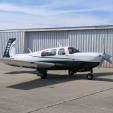New Shimmy
-
Members Online
- BrianL29
- Steve Dawson
- bluehighwayflyer
- donkaye, MCFI
- Scott Ashton
- Scottknoll
- Kirch56H
- stlcg
- drstephensugiono
- EricJ
- PeteMc
- 201Steve
- exM20K
- denbmd
- DC_Brasil
- trinair
- eman1200
- PT20J
- Robert Hicks
- Max Clark
- patrickf
- Souhail
- dkkim73
- Jsno
- carusoam
- Rick Junkin
- Vance Harral
- DXB
- S50D
- ttflyer
- AF M20J
- phxcobraz
- spistora
- mmcdaniel33
- KSMooniac
- Skyland
- AH64Bennett
- Guy123
- SoccerCA
- Ragsf15e
- Andy95W


Recommended Posts
Join the conversation
You can post now and register later. If you have an account, sign in now to post with your account.